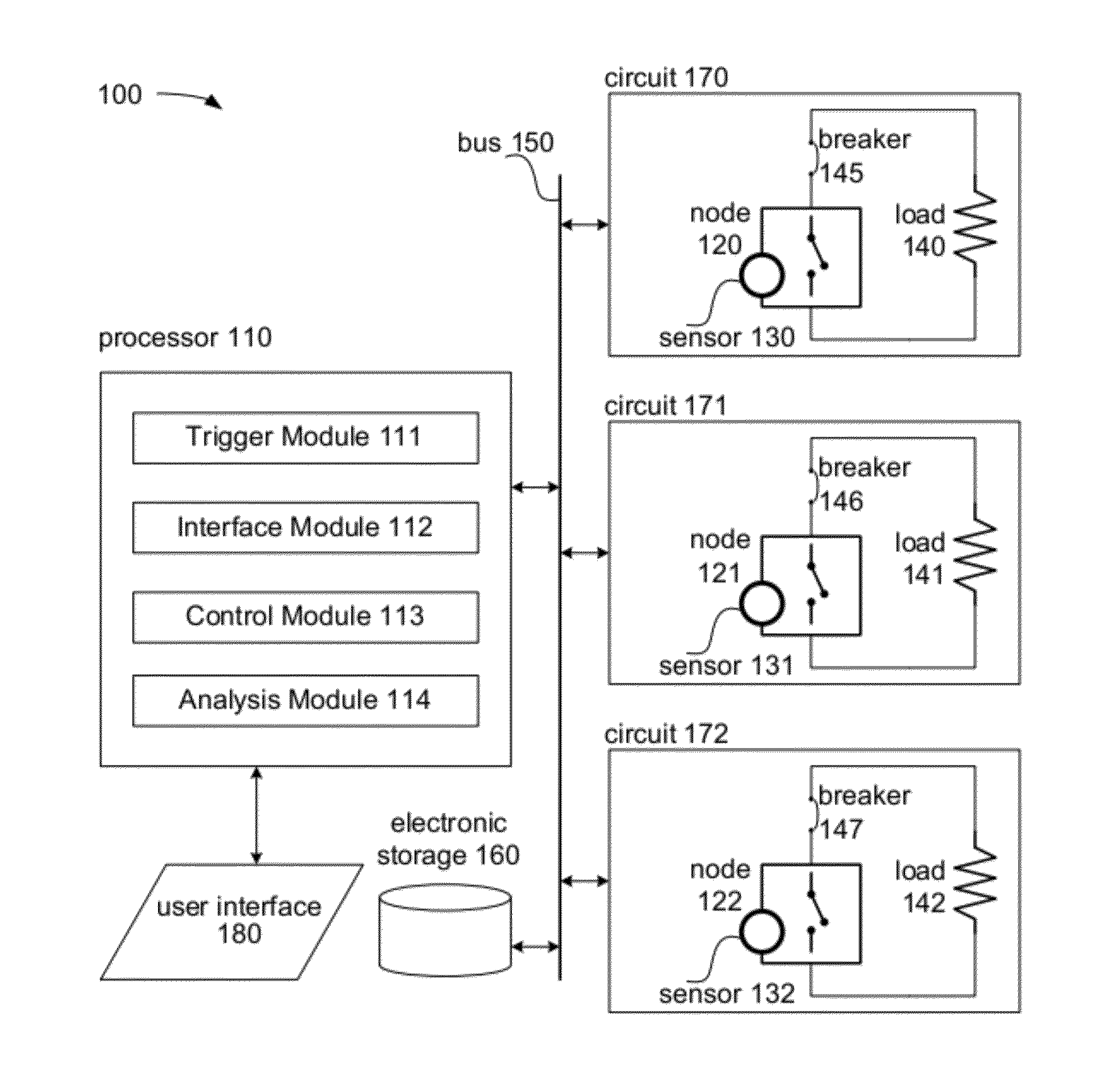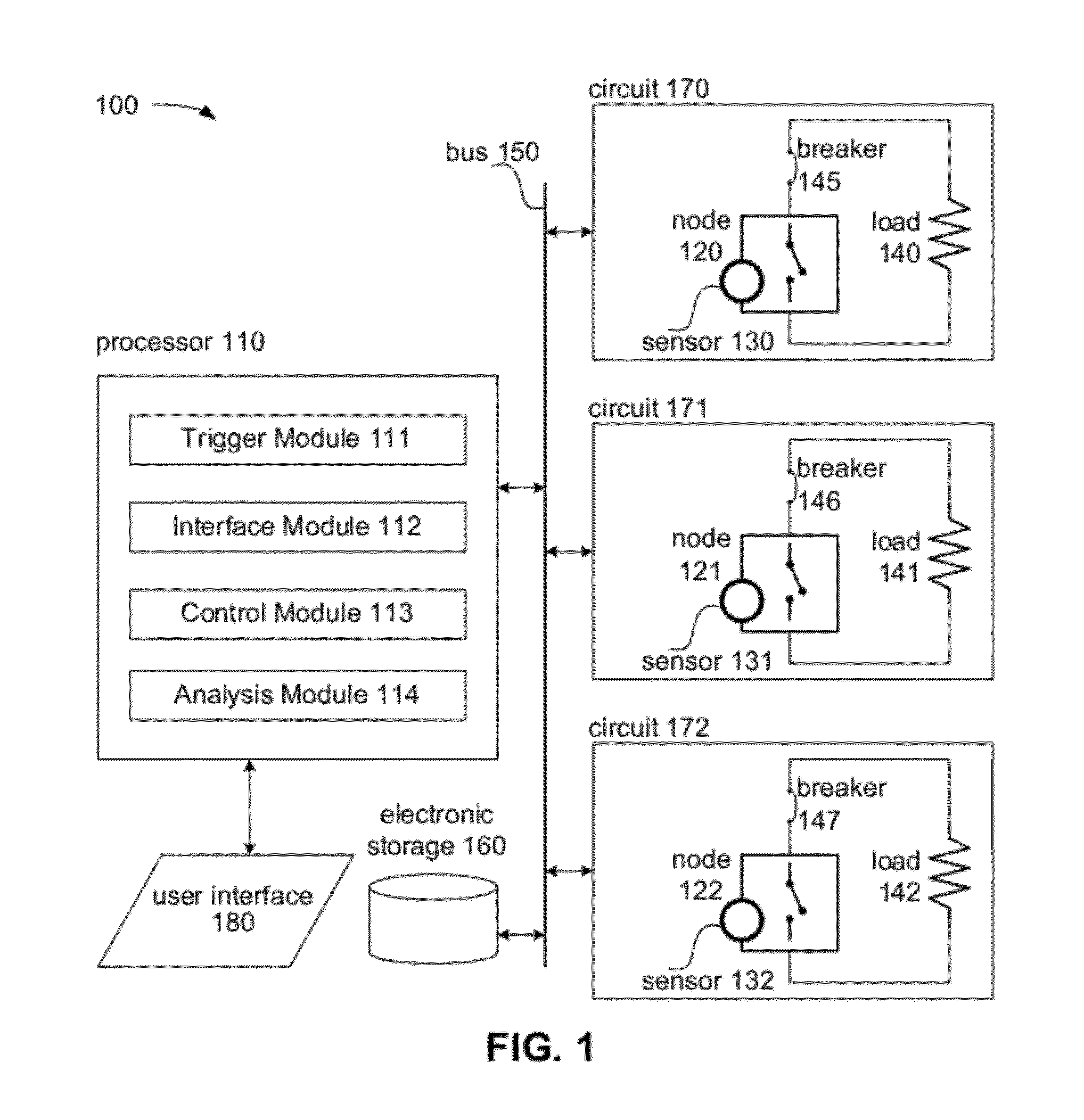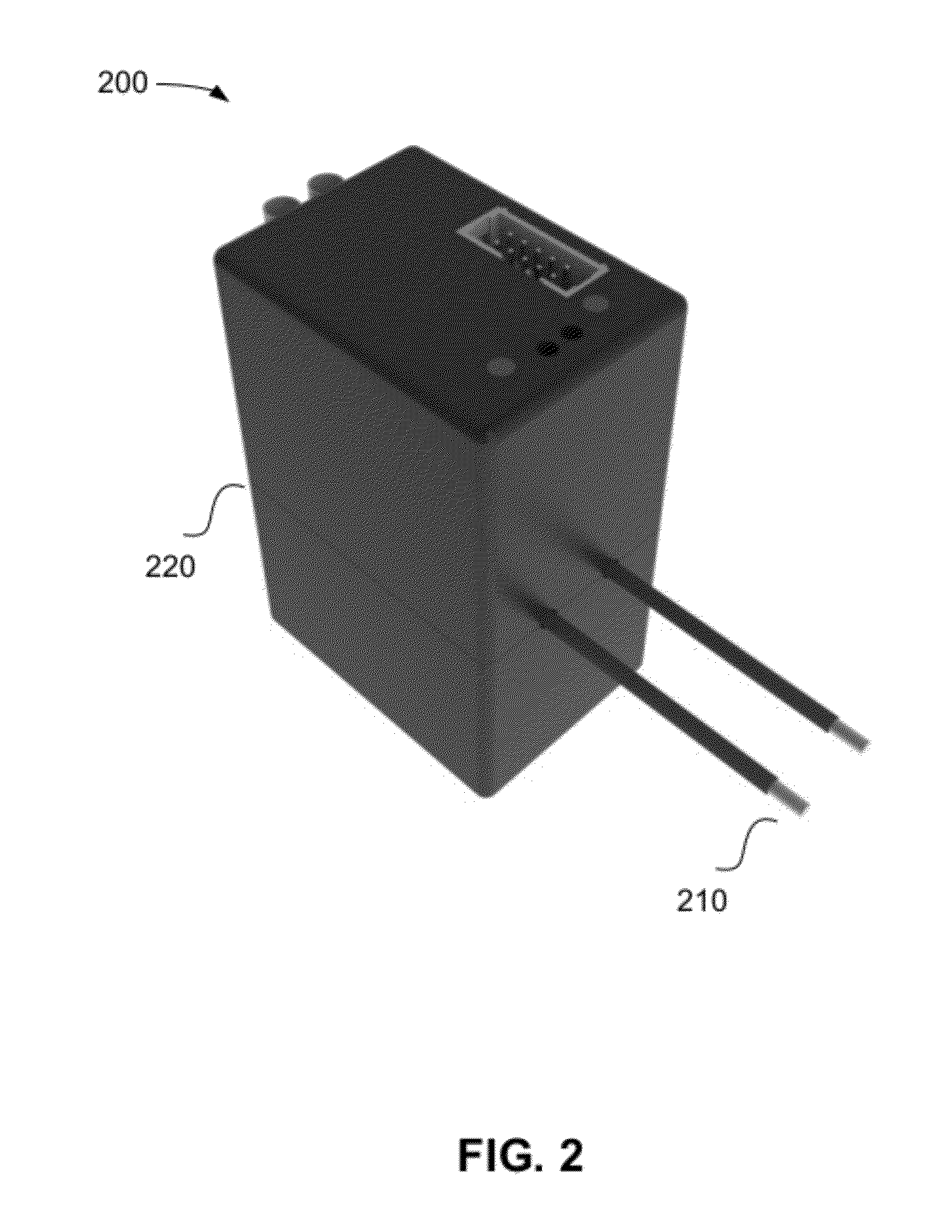Effectuating energization and deactivation of particular circuits through rules-based smart nodes
a technology of smart nodes and circuits, applied in the field of electric power management, can solve the problems of critical circuits that may never be completely powered down, and the significant percentage of power consumption, and achieve the effect of preserving power supply life and enhancing power efficiency
- Summary
- Abstract
- Description
- Claims
- Application Information
AI Technical Summary
Benefits of technology
Problems solved by technology
Method used
Image
Examples
Embodiment Construction
[0018]FIG. 1 illustrates an exemplary implementation of a power management system 100. Power management system 100 may be configured to control power delivery from a power supply to a circuit, and may include one or more of electronic storage 160, bus 150, processor 110, user interface 180, one or more circuits such as circuit 170, circuit 171, and circuit 172, and / or other components.
[0019]Power management system 100 may receive electrical power from at least one power supply. The power supply, or power supplies, may comprise any source or sources of electrical power, including the utility grid. For example, the power supply may include a remote power generation installation such as a power plant. Such a power plant may include coal-burning power plant, a nuclear power plant, and so on. As another example, the power supply may include a power generator that converts tidal energy of the ocean into power that is usable within power management system 100. Additionally or alternatively...
PUM
 Login to View More
Login to View More Abstract
Description
Claims
Application Information
 Login to View More
Login to View More - R&D
- Intellectual Property
- Life Sciences
- Materials
- Tech Scout
- Unparalleled Data Quality
- Higher Quality Content
- 60% Fewer Hallucinations
Browse by: Latest US Patents, China's latest patents, Technical Efficacy Thesaurus, Application Domain, Technology Topic, Popular Technical Reports.
© 2025 PatSnap. All rights reserved.Legal|Privacy policy|Modern Slavery Act Transparency Statement|Sitemap|About US| Contact US: help@patsnap.com



